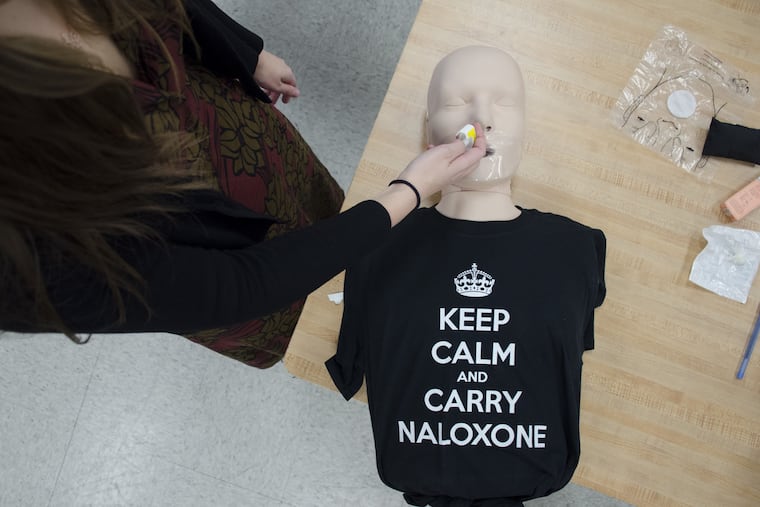College campuses distribute condoms. Why not Narcan? | Opinion
Not only could increasing access to Narcan save student lives in the event of an opioid overdose, but it would give universities the opportunity to teach students safer ways to use drugs, like carrying Narcan at all times, testing substances prior to ingesting them, taking advantage of local syringe exchange programs, and never using alone.

During the last academic year, over the course of just one week, two students at Temple University died of opioid overdoses. James Orlando was found dead in his apartment one block off campus, and Michael Paytas overdosed among students, staff, and security in the library. As a Temple alum who spent her undergraduate years in addiction, and a current faculty member in recovery, I was deeply affected by these deaths.
However, while Temple is, in fact, the closest school to the epicenter of our city's addiction crisis, this problem is not specific to Temple. In January, a Penn Law student died of an overdose on campus. In recent years, students from Drexel and Cabrini have died of overdoses (though off campus).
No school, like no sector of society, is immune.
Student overdose deaths should come as a shock to no one. Orlando and Paytas were just two of more than 1,200 people who died of overdoses last year in this city. In Philadelphia, parents and students tell me, a death sentence is just one text message away: Students get heroin, fentanyl, and other drugs delivered directly to their doors.
Though American college students report using illicit substances (other than marijuana) less than their non-college peers, one in five still do. Also, recently, there have been local overdose surges due to fentanyl-contaminated drugs, such as cocaine, meaning that not only are students who use opiates at risk for an overdose but so are students who report using illicit substances of any kind. That's approximately 18,000 students at Philadelphia's largest four-year schools.
With these findings on student drug use, it is abhorrent that local colleges have not done more to protect their students.
As the 2018-19 academic year approaches, local colleges must take action by providing students with easy access to naloxone, sold under the brand name Narcan, among others. Wherever campuses distribute harm-reduction supplies such as condoms, they should distribute naloxone. All residence assistants in all dorms, as well as security officers in every campus building, should carry it. First responders and the occasional faculty, staff, and students taking it upon themselves to carry it are just not enough.
Especially because colleges can get naloxone for free or at low cost. They just need to apply for specific grants, such as this one from ADAPT Pharma, or submit a request with the Philadelphia Department of Public Health. There are also already local Narcan training opportunities, so schools don't necessarily need to arrange their own training sessions.
Not only could increasing access to naloxone save student lives, but it would give universities the opportunity to teach students safer ways to use drugs, like carrying naloxone at all times, testing substances prior to ingesting them, taking advantage of local syringe-exchange programs, and never using alone.
And if saving student lives isn't motivation enough, imagine the headlines with a simple solution like this in place: Student life saved thanks to new campus Narcan policy.
Now that's a school I'd send my kid to.
Jillian Bauer-Reese is an assistant professor of journalism in the Klein College of Communication at Temple University, where she teaches courses called Solutions Journalism: Covering Addiction and the Kensington News Project. jbr@temple.edu @thesmallpicture